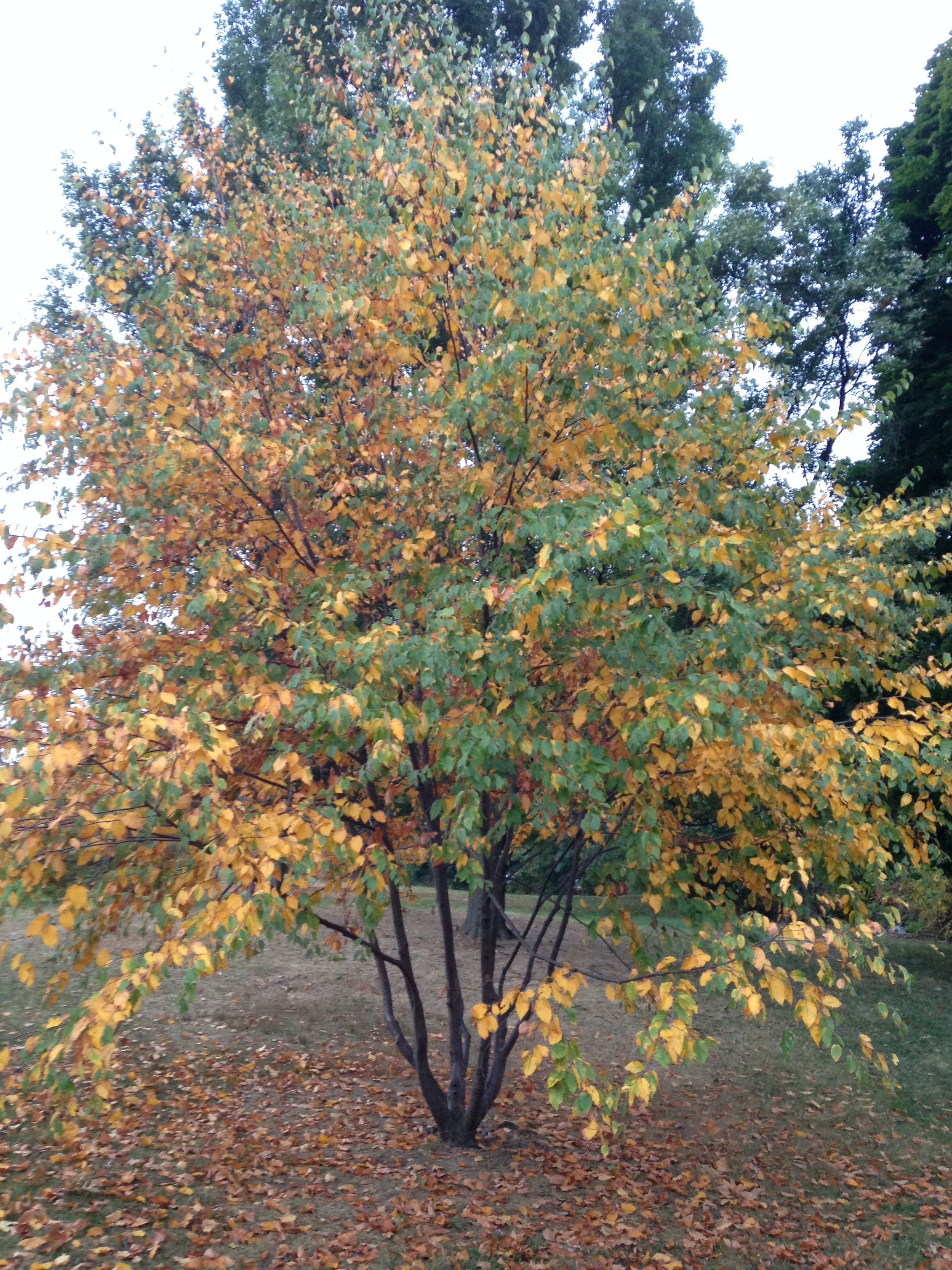Black Birch (Betula lenta) : Overview
Sweet Birch, Cherry Birch, or Mahogany Birch
By Brenna Lewis-Slammon
On UVM's campus, a young Black Birch is tucked away behind the sloping hill that runs along the path connecting Redstone to Central campus. I approached it on an early fall evening to see its cascade of yellow and green leaves igniting the sky with color. The leaves provided an intense contrast to the cloudy, darkening sky. As I got closer I was confronted with an aromatic, sweet, and wholesome scent radiating out from the dark, smooth bark. This magnificent aroma hinted at the sap that lies within the tree. The dark wood was smooth to the touch with horizontal striations running along its surface and a deep, grey-brown color. A litter of leaves created a bed beneath the tree. Needless to say, it was beautiful.
What the tree does not hint at from its stunning exterior is the extraordinary things that have and can come from these trees. The Black Birch are widely used for their sap, wood, and branches for products ranging from birch noodles to furniture veneer. They also contain an oil within their twigs that is chemically identical to that of the Wintergreen plant. The Black Birch has also played a meaningful and sometimes spiritual role throughout human history. In Old World Europe Black Birches were planted over graves with the hopes of encouraging the deceased to climb to heaven; the trees were considered sacred. This profile will provide an introduction to the many medical, practical, and cultural uses of the Black Birch in all of its glory.

